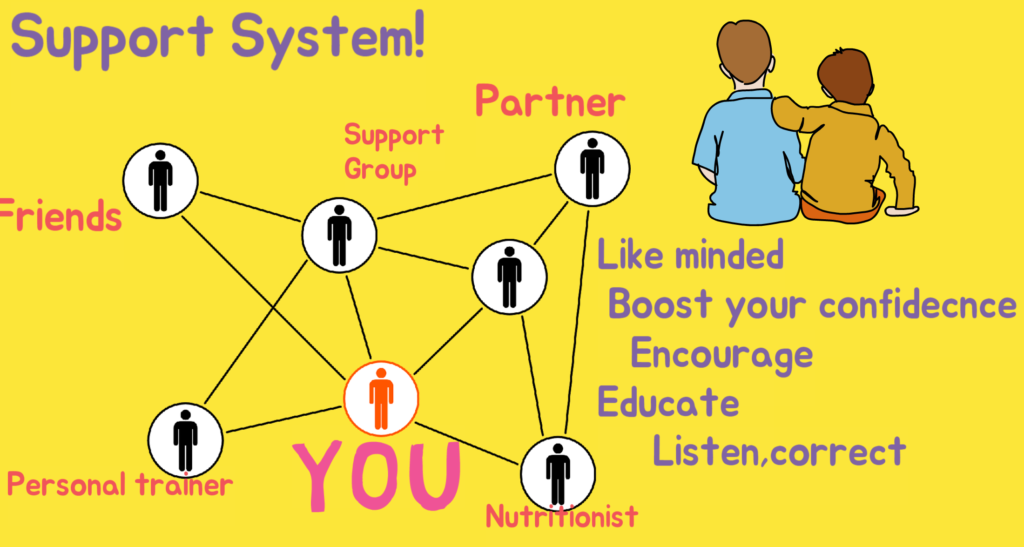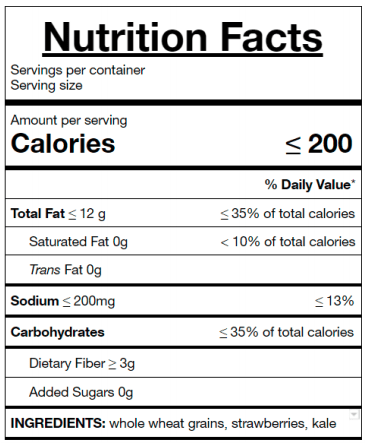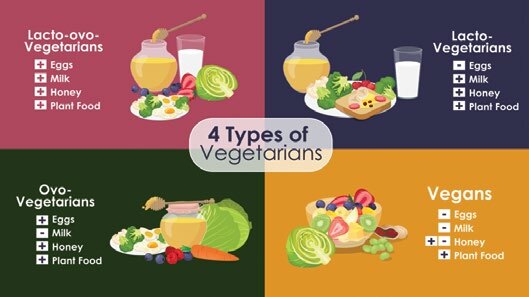
Current updates to the Dietary Guidelines are being done by the Department of Health and Human Services and Department of Agriculture. These guidelines give sound advice on how we can eat healthy and how to prevent chronic disease. They have an influence on how Federal government's food programs will be developed. They are also used for guidance in developing the United States' food labeling system, nutrition education, as well as public feeding programs. The guidelines apply to everyone, whether they are people with chronic illnesses or people with special nutritional needs.
Dietary Guidelines are based upon the best scientific evidence. This advice is constantly updated and reexamined for accuracy. Participation is required from nutrition scientists, epidemiologists and other experts. The Dietary Guidelines Advisory Committee will then review the guidelines. To make these recommendations practical, the committee uses national data sets.
In developing dietary guidelines, there are many factors to consider, such as the health effects of food or beverages, environmental concerns, preservation of traditional cuisines, and how they affect your health. An increase in the consumption of refined carbohydrates and saturated fats can have a significant impact on our bodies. Dietary guidelines recommend that sugar consumption be reduced and that you eat more fruits and veggies. They also recommend eating more whole grains and low-fat dairy products.

Dietary guidelines are developed for a variety of audiences, including health professionals, nutrition educators, federal nutrition program operators, and the general public. They provide guidelines on food labeling and dietary choices to best meet the nutritional requirements of the public. These guidelines should also include policies that promote healthy eating habits that can be sustained over time.
Every five years, the guidelines are revised. These guidelines have been updated to reflect the most recent science as well as to promote health and prevent future diseases. These guidelines are made available as a resource to public health professionals as well as policy makers. Some of the most important recommendations include to limit sugar and salt intake, increase physical activity, as well as to eat a variety fruits and vegetables. They can also be used to lower the risk of developing chronic diseases, such as type 2 diabetes or cardiovascular disease.
The Dietary Guidelines Advisory Committee meets six time to review scientific evidence regarding specific topics. It submits its report to HHS. The most recent report by this committee was published on February. The Dietary Guidelines Advisory Committee is composed of between 11 and 15 experts. These experts help to review the most up-to-date scientific evidence, and make recommendations.
The multi-year process of creating the Dietary Guidelines was a long one. HHS invites the public to comment on the scientific questions. These comments are used to determine which scientific questions will be addressed by the final dietary guidelines.

Over the years, the Dietary Guidelines process has changed to reflect changes in science, public health, best practices in scientific reviewing, and other factors. For example, USDA and HHS recently made significant changes to increase public participation and make the guidelines more transparent.
FAQ
What are the 7 tips to have a healthy life?
-
Take care of your health
-
Exercise regularly
-
Sleep well
-
Make sure to drink plenty of water.
-
Get adequate rest
-
Be happy
-
Smile often
What is the difference between fat and sugar?
Fat is an energy source that comes directly from food. Sugar is a sweet, naturally occurring substance in fruits and vegetables. Both fats (and sugars) have the exact same calories. Fats have twice the calories of sugars, however.
Fats can be stored in the body, which can lead to obesity. They cause cholesterol buildup in arteries which may lead to heart attacks and strokes.
Sugars are quickly absorbed and provide instant energy. This causes blood glucose levels rise. High blood glucose levels can be dangerous because it increases the risk of developing type II diabetes.
How do you measure body fat?
The best way to measure body fat is with a Body Fat Analyzer. These devices are used for measuring the percentage of body fat in people who want to lose weight.
Exercise: Good or bad for immunity?
Your immune system is strengthened by exercise. Your body creates white blood cells, which are immune-boosting and fight infection. You can also eliminate toxins from the body. Exercise is a great way to prevent diseases such as cancer and heart disease. Exercise also helps to reduce stress levels.
Exercising too often can cause your immune system to be weaker. When you exercise too hard, your muscles will become sore. This can cause inflammation, swelling, and even death. To fight infection, your body will produce more antibodies. These extra antibodies can lead to allergies or autoimmune disorders.
So, don't overdo it!
What's the problem with BMI?
BMI stands to Body Mass Index. This refers to the measurement of body weight based on height. This formula calculates BMI.
Weight in kilograms divided with height in meters.
The result can be expressed in a number between 0 to 25. A score of 18.5 or higher indicates overweight, while a score of 23 or higher indicates obesity.
A person who is 100kg and 1.75m tall will have a 22 BMI.
Statistics
- In both adults and children, the intake of free sugars should be reduced to less than 10% of total energy intake. (who.int)
- According to the Physical Activity Guidelines for Americans, we should strive for at least 150 minutes of moderate intensity activity each week (54Trusted Source Smoking, harmful use of drugs, and alcohol abuse can all seriously negatively affect your health. (healthline.com)
- Extra virgin olive oil may benefit heart health, as people who consume it have a lower risk for dying from heart attacks and strokes according to some evidence (57Trusted Source (healthline.com)
- According to the 2020 Dietary Guidelines for Americans, a balanced diet high in fruits and vegetables, lean protein, low-fat dairy and whole grains is needed for optimal energy. (mayoclinichealthsystem.org)
External Links
How To
How to Live a Healthy Lifestyle
A healthy lifestyle is one that allows you to maintain your weight, your health, and your fitness. This lifestyle includes healthy eating habits, regular exercise, adequate sleep, and abstaining from drugs, alcohol, caffeine, tobacco and other harmful substances. A healthy lifestyle will help you feel happy and fit. Healthy lifestyles can also reduce the risk of chronic diseases, such as stroke, heart disease, diabetes, cancer, osteoporosis and arthritis.
This project had the main objective of providing a step-by–step guide to living a healthier lifestyle. The first part of the project consisted of writing the introduction, which explains what a healthy lifestyle is, why people should adopt a healthy lifestyle and who we are. The body paragraphs are a collection of tips on how to live a healthy life. I then wrote the conclusion. This summarizes the whole article, and provides additional resources, if necessary.
This assignment taught me how to write a concise paragraph. I learned how topic sentences and supporting details were organized. Additionally, I learned how to organize my ideas into topic sentences and supporting details. I also learned how to write with proper grammar.